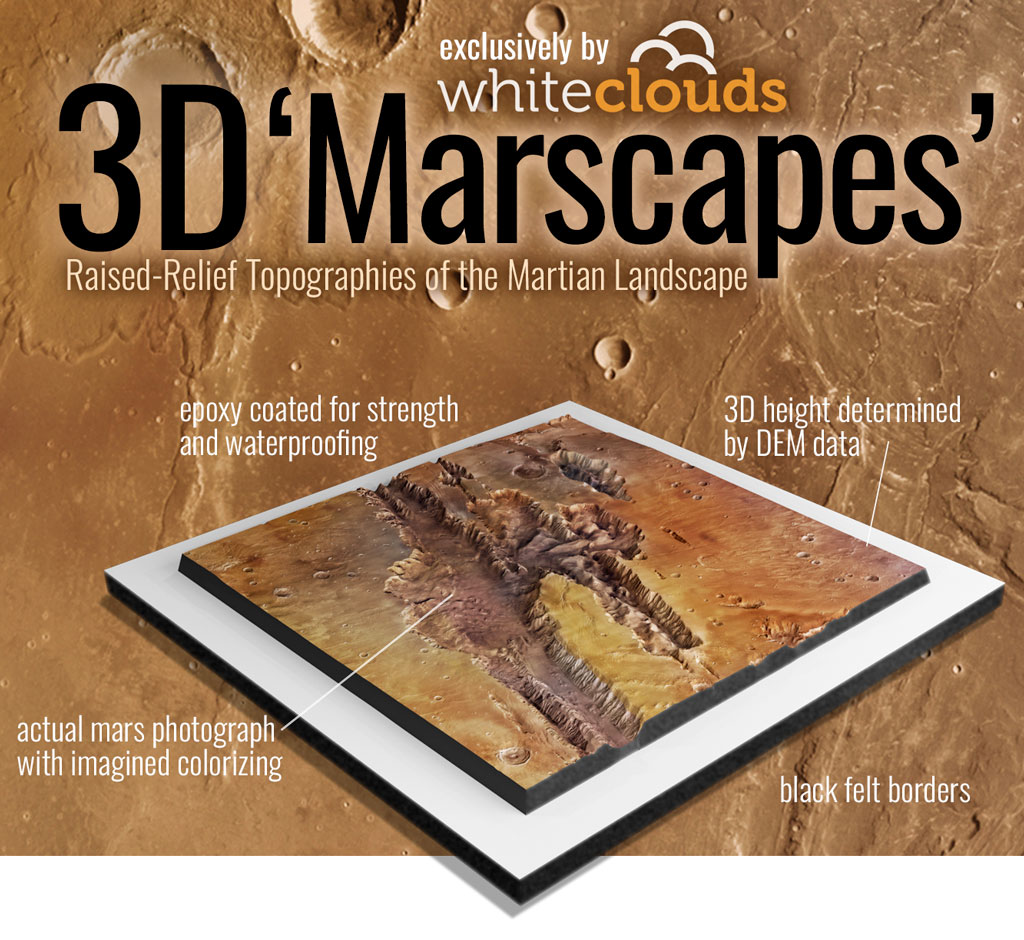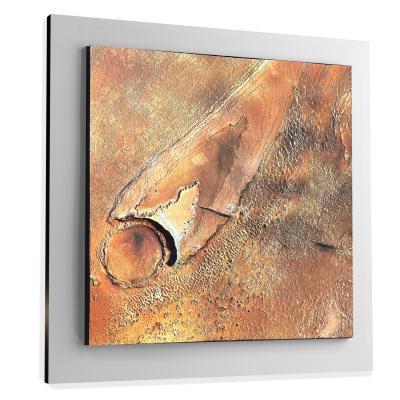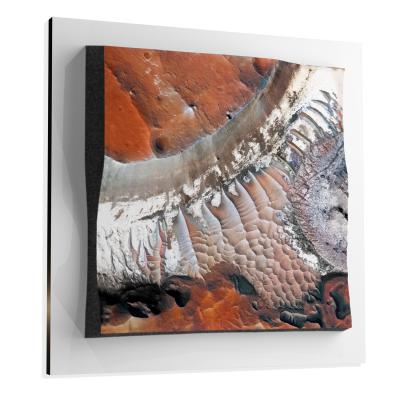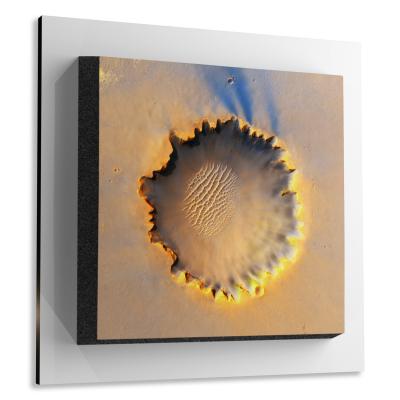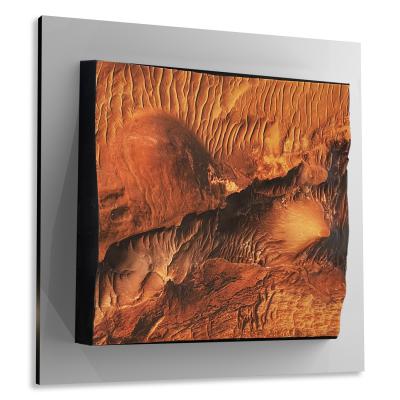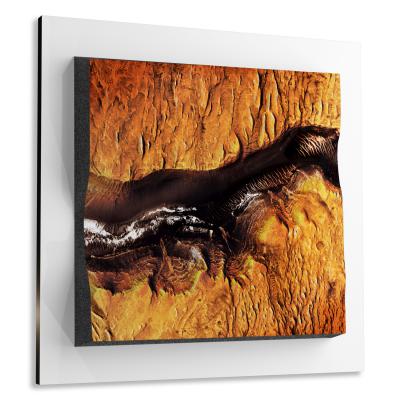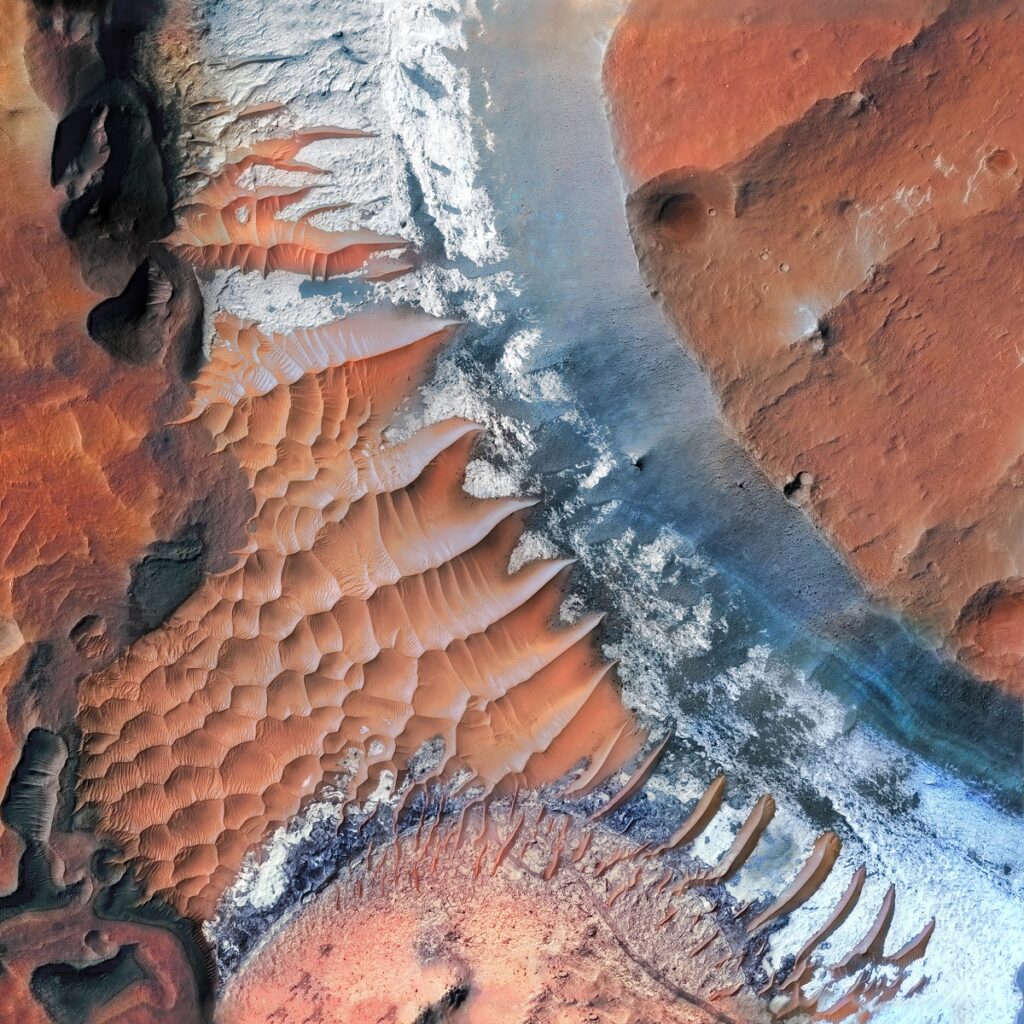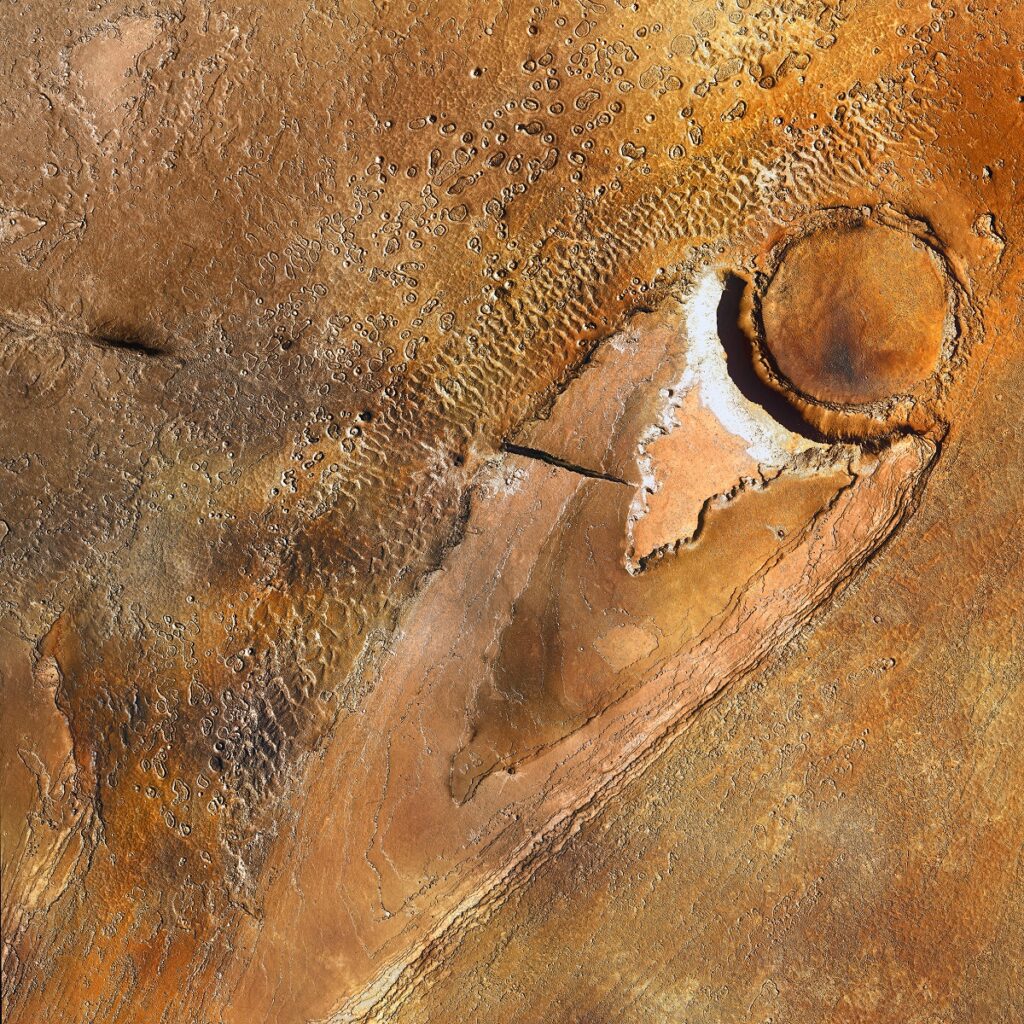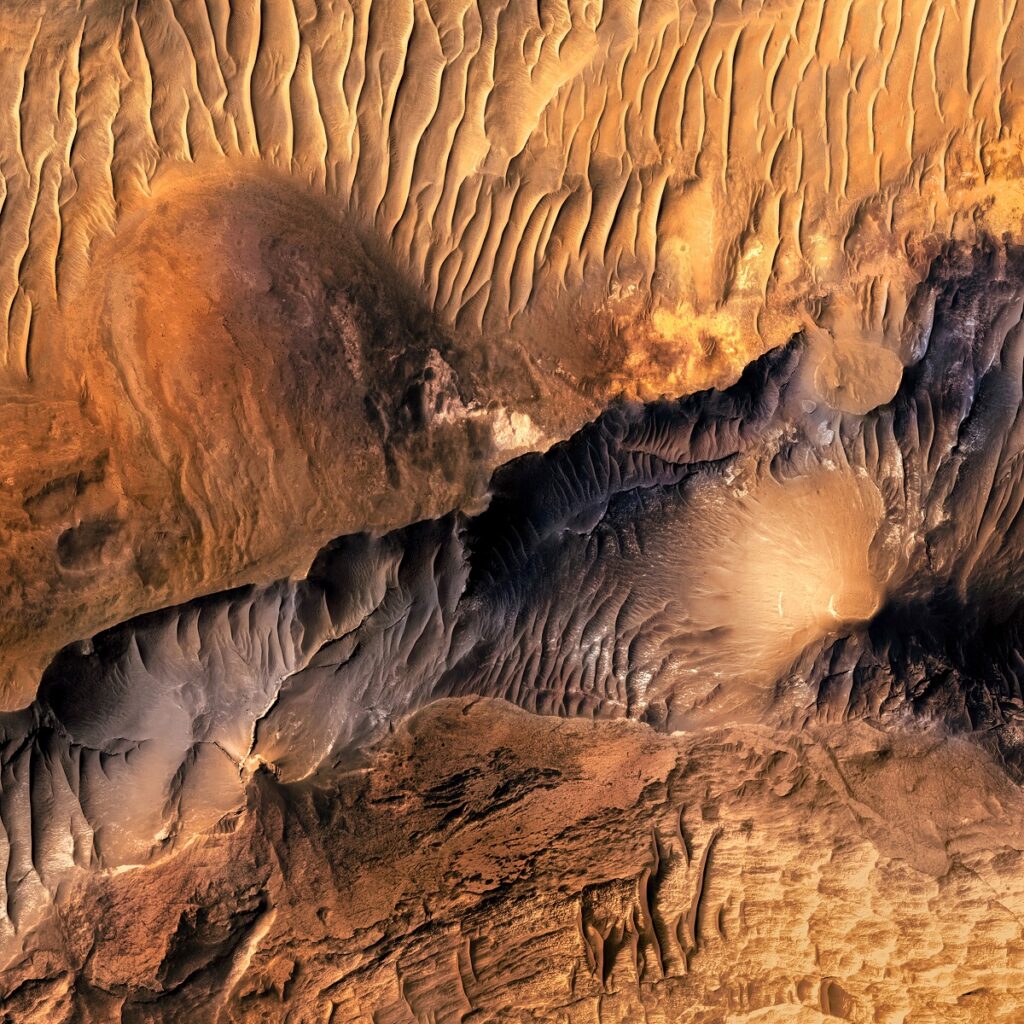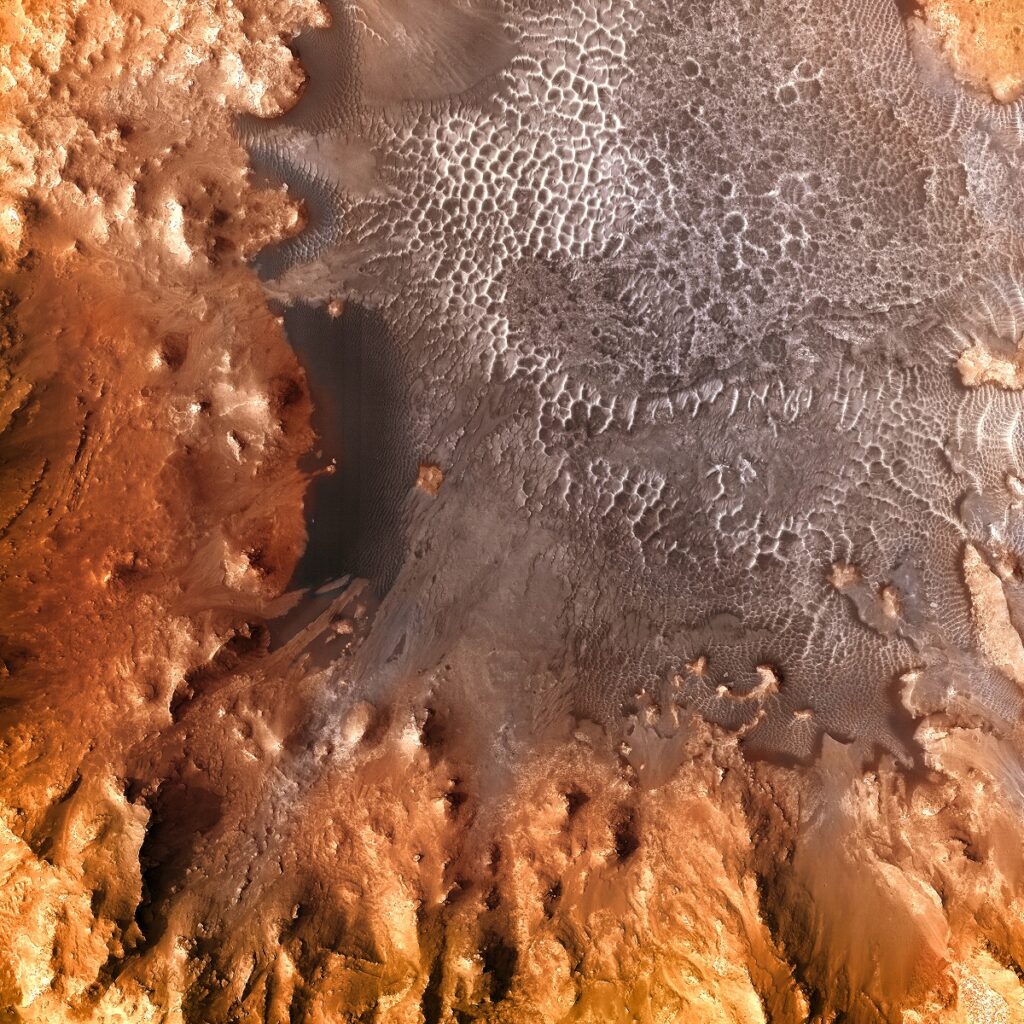Schiaparelli Crater
Schiaparelli Crater
We Build Custom 8K Mars Canvas Prints of Schiaparelli Crater
Did you know we make
custom
8K Mars Canvas Prints
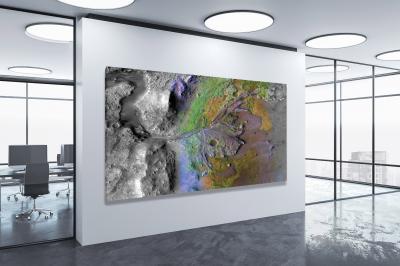
and
3D Marscapes
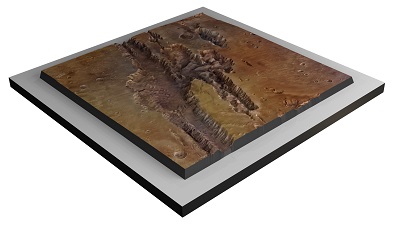
Schiaparelli Crater
The Schiaparelli Crater on Mars is a geological wonder and a hotbed of scientific interest. Named after Italian astronomer Giovanni Schiaparelli, who made significant contributions to planetary science, this Martian impact crater serves as a valuable natural laboratory for the study of Mars’ geological, hydrological, and potential astrobiological history.
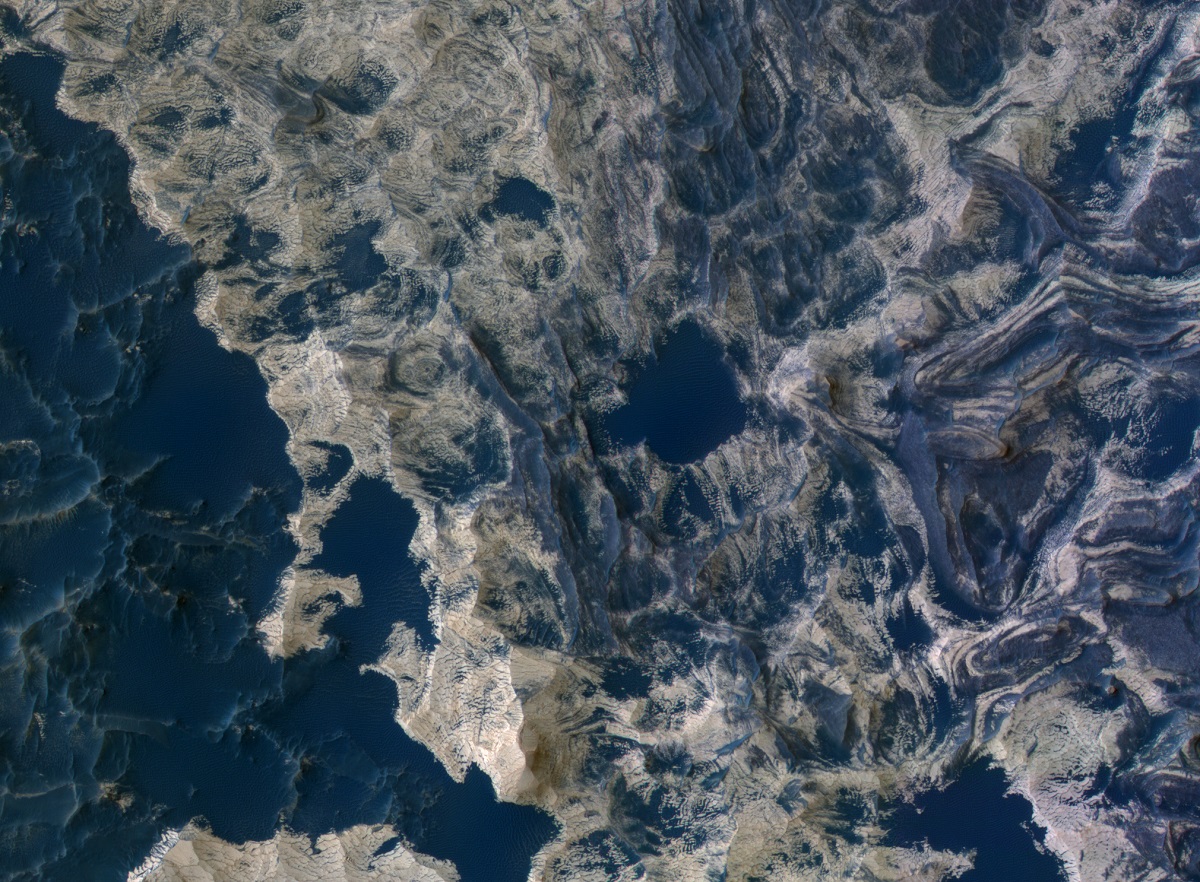 Layers and Sand on the Floor of Schiaparelli Crater
Layers and Sand on the Floor of Schiaparelli Crater
Geographical Location
The Schiaparelli Crater is prominently located in the equatorial belt of Mars, more specifically at coordinates approximately centered around 3°S latitude and 343°E longitude. This colossal impact feature has an awe-inspiring diameter stretching to about 286 miles (equivalent to roughly 461 kilometers), positioning it among the ranks of the more expansive craters adorning the Martian landscape. The crater is nestled within the geographical confines of the Sinus Sabaeus quadrangle. Its equatorial position makes it an enticing hotbed for scientific inquiry, not only for its own intrinsic features but also for its comparative geography. Within its immediate vicinity lie other scientifically compelling regions, including the Meridiani Planum and a constellation of additional crater systems. This locational context amplifies Schiaparelli Crater’s scientific appeal, essentially turning it into a geographical nexus for multidisciplinary research efforts focused on Martian geology, climate history, and perhaps even astrobiology.
Advertisement
Sample Marscapes
Geological Composition
Diving into the geological framework of the Schiaparelli Crater reveals a compellingly complex tapestry that can serve as a window into Mars’ multifaceted geological history. The most salient aspect of this region is undoubtedly the impact basin itself, carved into the Martian surface by a cataclysmic event that transpired millions, if not billions, of years ago. While the primary composition of the crater’s walls and floor are basaltic in nature, there exists a significant accumulation of sedimentary deposits, which adds another layer of complexity to its geological makeup. A myriad of features within the crater—such as fluvial channels, potential ancient lake beds, and eroded basins—strongly hint at past episodes of water activity. Advanced mineralogical assessments have unveiled an eclectic range of minerals within the crater, including but not limited to sulfates, clays, and possibly even carbonates. Each of these minerals tells a story of aqueous environments, making Schiaparelli Crater an indispensable natural laboratory for scrutinizing Mars’ hydrological and possibly astrobiological past.
Significant Discoveries
Water-Ice Reserves
In the quest to decode Mars’ history and its potential for life, one of the most ground-breaking discoveries at Schiaparelli Crater has been the plausible existence of subterranean water-ice reserves. If confirmed, these reserves could revolutionize our understanding of the Martian hydrological cycle and could be a game-changer in terms of providing essential resources for future human expeditions to Mars.
Layered Sedimentary Deposits
Another captivating discovery is the identification of intricately layered sedimentary rocks scattered within the crater’s confines. These layered structures could potentially serve as geological libraries, encapsulating a plethora of information that may reveal a sequential narrative of Martian geological and climatic shifts.
Ancient Hydrological Activity
Yet perhaps the most exhilarating revelation is the substantial evidence pointing to ancient hydrological processes. Features such as fluvial channels, likely carved by flowing water, and potential dried-up lake beds present an extraordinarily vivid tableau of what could have been a Martian environment replete with liquid water, thereby exponentially increasing the chances of past life.
Scientific Missions
Mars Reconnaissance Orbiter (MRO)
The Mars Reconnaissance Orbiter has played a cornerstone role in accumulating data about the Schiaparelli Crater. Equipped with a high-resolution imaging science experiment (HiRISE) camera and the Compact Reconnaissance Imaging Spectrometer for Mars (CRISM), MRO has contributed a wealth of data ranging from high-definition topographical maps to comprehensive mineralogical analyses.
Mars Express
The Mars Express mission, orchestrated by the European Space Agency, has also been a key player in our evolving understanding of this fascinating crater. Its high-resolution stereo camera has been instrumental in delivering exceptionally detailed 3D topographical maps, which have been critical in further characterizing the crater’s unique features.
Future Missions
Schiaparelli Crater has been earmarked for a variety of proposed future missions, largely owing to its captivating array of geological and geomorphological characteristics. These characteristics make it a compelling subject for future research aimed at uncovering the secrets of Martian history, geology, and perhaps even its astrobiological potential.
Geomorphological Features
Schiaparelli Crater offers a kaleidoscopic array of geomorphological wonders. Its crater rim is anything but monotonous, exhibiting a jagged, complex topography punctuated by numerous smaller impact craters, some of which look relatively fresh. The internal landscape of the crater is equally spellbinding, punctuated by strata of sedimentary rocks, channel-like features likely carved by ancient water flows, and potential remnants of ancient lake beds. Further enriching its geomorphological tapestry are dendritic valleys, branching out in tree-like patterns, strongly suggestive of a history of water-based erosional processes, potentially from ice melt or even flowing rivers in a bygone Martian era.
Schiaparelli Crater serves as a window into Mars’ complex geological and possibly hydrological past. Its diverse geological composition, significant scientific discoveries, and the wealth of data provided by past and ongoing missions make it an epicenter for Martian studies. As we continue to explore this intriguing feature, we inch closer to understanding the mysterious history of Mars, and perhaps even the potential for life beyond Earth.
More About Mars
Contact us today to learn more about our 3D services and how we can help you achieve your goals.
